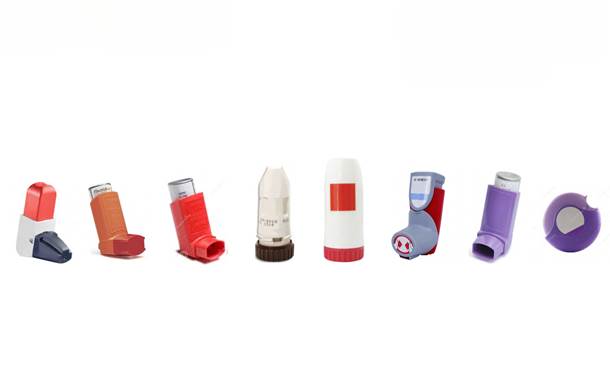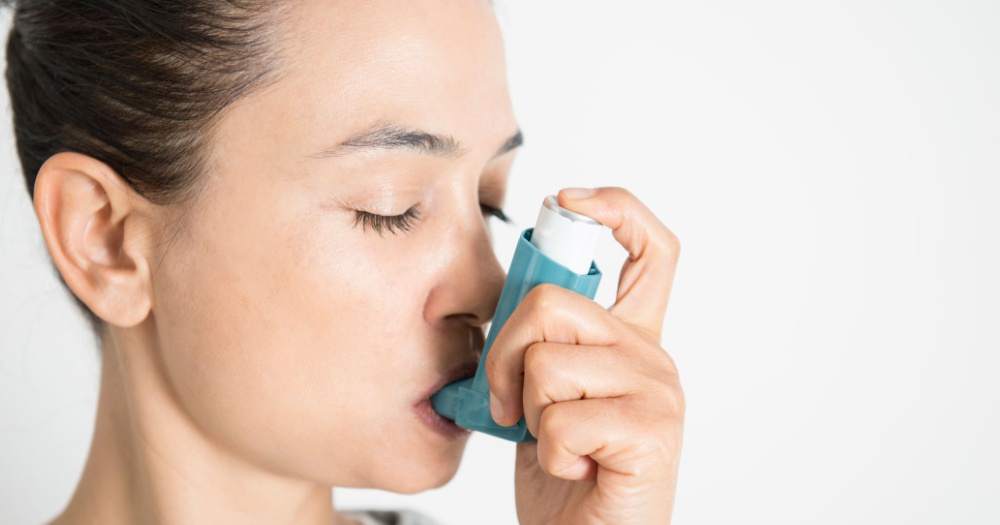Growing up in Singapore, you’re likely to know at least a few people who have asthma.
After all, who hasn’t seen the ubiquitous blue inhaler taken out in school, perhaps after a strenuous PE lesson?
However, how much do you really know about the condition?
Mothership spoke to Doctor Adrian Chan, who is the Vice-President of the Asthma & Allergy Association (AAA) Singapore, who provided some answers for some of the most common asthma misconceptions in Singapore.
How common is asthma in Singapore?
Asthma is actually really common in Singapore, which explains why most Singaporeans are somewhat familiar with the disease.
According to Chan, about one in five children in Singapore, and five percent of adults have asthma, and asthma cases continue to be on the rise.
This makes Singapore one of the countries with the highest prevalence of asthma in the world, said Chan.
Is asthma a permanent condition?
Sort of. While some (lucky) children manage to outgrow asthma over time, it’s actually possible for asthmatic children’s symptoms to recur when they reach adulthood.
This is especially so if they go through certain life changes, like weight gain, pregnancy and smoking.
Unfortunately, for adults, asthma doesn’t simply just go away over time. The condition involves inflammation in the airways, which may make them prone to symptoms or attacks.
Bottom line: Asthma is a serious condition, and you cannot simply hope for your asthma to magically go away. Go get treatment for the inflammation.
If you have asthma, it means you can’t exercise, right?
If you’re looking for an excuse to be a couch potato, you’ll be disappointed.
According to Chan, while it’s true that you should not exert yourself too much when you are having an asthma attack, you should be able to exercise normally if your asthma is well controlled.
In fact, national football legend Fandi Ahmad’s youngest son, Iryan, is a great example.
Despite having asthma, he continues to be an active sportsman, pursuing his dream of being a football star.
You can watch an interview with Fandi and Iryan here.
Hmm. Sounds like asthma isn’t really that serious?
Asthma is actually more serious than most people think.
Even mild asthmatics can get severe asthma attacks.
According to Chan, one in three patients in Singapore admitted for Severe Life Threatening Asthma (SLTA) were only using the blue inhaler to manage their condition.
Worst still, asthma cases can potentially result in significant disabilities, or even death, making it important for asthma patients not to underestimate the symptoms they experience.
Yikes.
Oh no. How does one treat asthma then?
Chan told Mothership that there are two main ways to treat asthma.
The first is using preventer inhalers(also known as steroid-based or controller inhalers).
 Image via AAA.
Image via AAA.
They form the foundation of asthma treatment, and should be used regularly to control the underlying inflammation in the lungs.
The second type of inhalers are reliever inhalers, more popularly known as blue inhalers.
These blue inhalers (which are also known as Salbutamol or Ventolin) are only meant to be used when asthma symptoms develop.
Wait. There are two types of inhalers? I only seem to see my friends use the blue inhaler.
Chan explained that as the blue inhaler helps to relieve the symptoms of an asthma attack (through opening the lung airways when symptoms occur), it is easy for an asthmatic to rely on it.
However, in the long run, you will still need to use preventer inhalers to control your asthma.
These blue inhalers should not be seen as the main treatment for asthma, as they do not treat the root cause of the inflammation in your lungs.
In fact, the Singapore guideline for asthma management was updated recently on Oct. 15, 2020.
One key recommendation is to not use the blue inhaler alone (i.e. without a preventer) to treat asthma long term, for patients aged 6 years and older.
More information can be found here.
“Using the blue inhaler three or more times a week is an indication that your asthma isn’t as well-managed as it should be, and can put you at risk of an increased asthma attack,” said Chan.
Long story short: If you don’t want your asthma to get worse, stop relying only on your blue inhaler, and start using your preventer inhalers.
Hang on. Preventer inhalers contain steroids, right? Isn’t that bad for me?
Not necessarily. Chan said that small doses of inhaler steroids are much less likely to be harmful, compared to long-term use of high dose oral steroids.
In fact, doses of inhaled steroids also help to treat the inflammation in asthmatic lungs, which helps to reduce asthma symptoms.
Lessons learnt: not everything with the word “steroids” in it is bad. It may even save your life.
Are all the inhalers the same? If I think I have asthma, can I just use someone else’s inhaler?
Please don’t do that. Similar to how you probably won’t take other people’s medication (at least, I hope not), you shouldn’t use another person’s inhaler as well.
It is important not to self-medicate, as you may not know the exact dosage you require.
The best way to manage your asthma is to have a doctor confirm the asthma diagnosis, and the degree of your symptoms.
The doctor will then be able to prescribe the appropriate medication for you, in order to keep your asthma under control.
Not sure whether you’re handling your asthma correctly? Take this test to find out.
If you’re still unsure of whether you’re over-reliant on your blue inhaler or not, you can easily find out by taking a simple test here.
Be sure to download your results, and share it with your doctor or nurse.
Using the blue inhaler is only a temporary solution, and can actually harm you in the long run.
If you find yourself having more asthma attacks, and needing to use the blue inhaler more often, it is probably a bad sign.
If you’re still unsure of anything asthma-related, you can find more useful information on the asthma section of the Asthma & Allergy Association (AAA) Singapore website.
Remember: when in doubt, just visit your doctor for advice. Don’t just follow Dr. Google blindly.
This sponsored article by Beat the Asthma Blues made the writer realise there are actually two types of asthma inhalers.
Top image via Cleveland Clinic’s Health Essentials
If you like what you read, follow us on Facebook, Instagram, Twitter and Telegram to get the latest updates.
